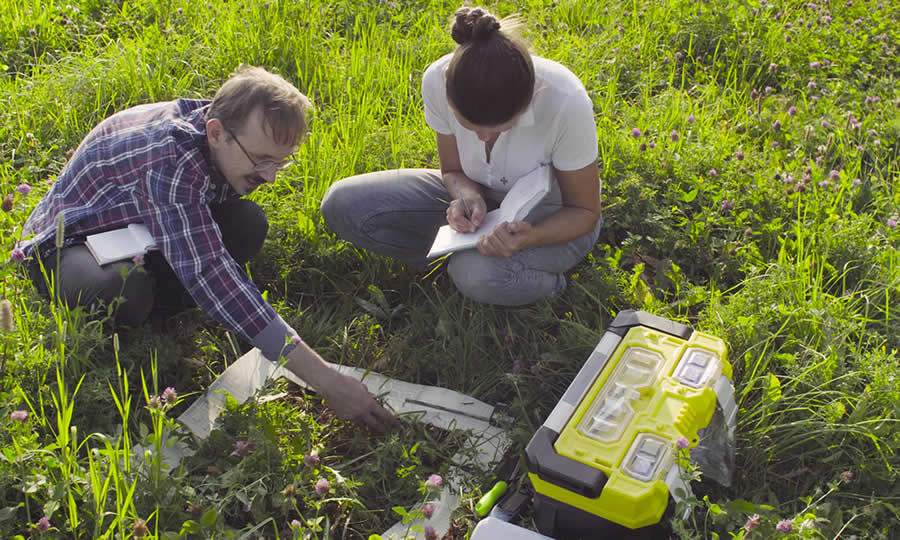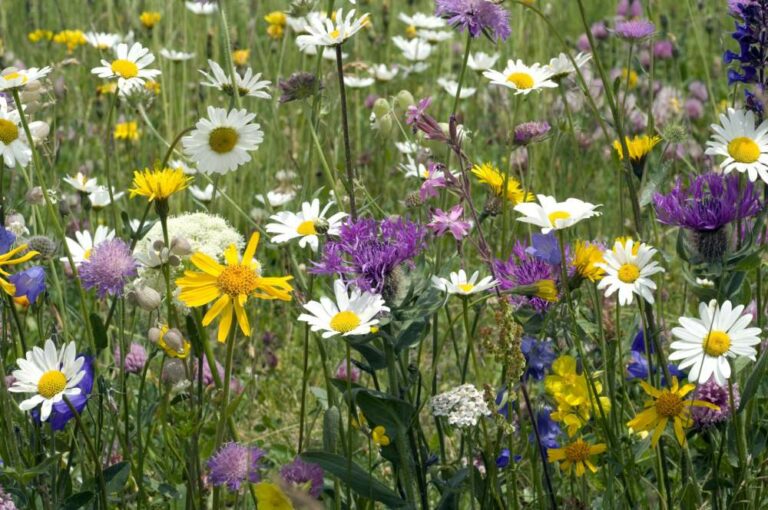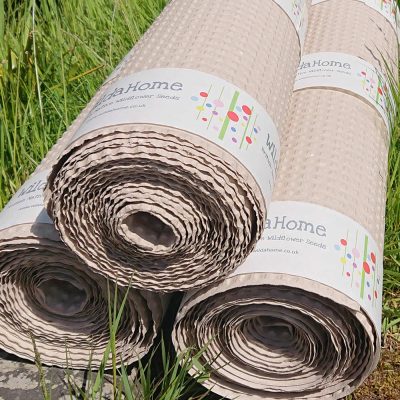Make Your Building Projects Greener: Strategies for Achieving UK Net Gain Biodiversity
If you’re planning a building project, you’ll want to ensure it meets the UK Net Gain Biodiversity requirements. Biodiversity is a vast topic that requires special consideration regarding construction projects. Fortunately, there are several steps you can take to ensure that the projects you work on minimise disruption and support local wildlife.
In this article, we’ll introduce you to the concept of UK net gain biodiversity and show you a few ways how integrating biodiversity into construction projects can pay dividends. We’ll also provide some top tips to help ensure your building project meets sustainability standards. Plus, we’ll look at some of the innovative green roof initiatives that have popped up nationwide in recent years. So if you want to ensure your building projects are as eco-friendly as possible, read on!
Introduction to Biodiversity Net Gain & UK Requirements
Have you ever thought about the impact that your building project could have on biodiversity? Achieving a net gain in biodiversity has become an essential requirement for many building projects in the UK, with the UK Government introducing a new target for developers to achieve at least a 10% net gain in biodiversity.
So, what is this “net gain”, and why is it being implemented? Net Gain Biodiversity is a term used to describe increasing the amount of biodiversity when compared with existing baseline levels before construction. It is intended to support projects that create, restore or enhance local habitats, including native plants and wildlife.
The UK Government’s ambition is to bring nature into all our decisions – from how we run our businesses responsibilities and manage our built environment. This includes having a plan for achieving a net gain in biodiversity. The UK Government has outlined its commitment to Net Gain Biodiversity and guides how developers can meet their requirements.
Assessing Your Building Project's Ecological Value
When making your building projects greener, the starting point is assessing their ecological value. Recent UK legislation requires developers to produce a Net Gain Biodiversity (NGB) assessment report, showing their plans to increase biodiversity in a project and meet the standards set out by the legislation.
Assessing your project’s ecological value involves the following steps:
- Collating information about the existing natural habitats of your site
- Identifying what types of habitats, you’ll need for your given project
- Assessing how much extra habitat will be required to meet UK Net Gain Biodiversity requirements
- Calculating how much this increased area of land will cost in terms of design and construction costs

By assessing existing information about your site, considering potential design solutions and evaluating the cost implications, you can establish a baseline for improving the ecological value of your building projects. This will help ensure that you meet UK Net Gain Biodiversity requirements.
Planning Strategically to Maximise Impact
It’s one thing to want to increase biodiversity on your building project, but it’s another to do it correctly. Planning strategically is critical because you maximise your overall impact when you plan well.
Understanding Your Site’s Environment
To create a successful plan that meets the UK Net Gain Biodiversity requirements, start by understanding your site’s local environment. Look at what ecological services, like floodwater healthcare or carbon sequestration, the site can provide and how it can be improved if certain species are preserved or introduced.
Maximising Impact with Balance
Remember that balance is essential in designing a successful biodiversity plan when introducing or preserving species. Introduce new species that complement existing ones and maintain a delicate balance between native and non-native species. This way, you give local ecosystems their best chance at a healthy recovery and sustained health.
Creating an effective plan for increasing biodiversity on your building project requires researching the local environment of your chosen site, understanding what ecological services it can provide, and balancing native and non-native species, all of which will help ensure that your final product is ecologically sustainable.
Design Strategies to Enhance Biodiversity
Enhancing biodiversity is essential if you want to make your building project greener. To meet UK Net Gain Biodiversity requirements, there are many design strategies that architects and designers can use to ensure they create habitats that promote biodiversity and encourage local wildlife.
Some of the strategies include:
- Enhancing existing habitats on-site – this could be done by preserving existing wildlife habitats or introducing natural elements such as water features or a wildflower meadow;
- Building green roofs – this help insulate buildings and reduce energy costs, as well as providing vital habitats for different species;
- Installing bird or bat boxes for nesting; and
- Creating log piles, installing bee-friendly plants, or other small details can help create a diverse ecosystem.
These simple designs are low-cost ways to meet UK Net Gain Biodiversity requirements and ensure your building projects are more sustainable.
Implementing Biodiversity Actions During Construction
You might not know you can implement biodiversity actions during construction to meet UK Net Gain Biodiversity requirements. To help with this, there are several strategies that you can apply:
Plant selection
Plant selection is critical to boost biodiversity and to meet the UK Net Gain requirements. This means choosing native plants and using species-rich, semi-natural habitats like meadows, woodlands, hedgerows, and other features like ponds and wildflower areas.

Creation of Habitats
Creating habitats is an excellent way of boosting biodiversity in your development projects. In addition to the planting mentioned above, consider enough light and water for your chosen plants to thrive; good soil condition; a variety of different habitat types; and protection from pollution, all essential in creating a suitable environment for new wildlife species.
Minimising Disturbance
Disturbing wildlife habitats should be avoided wherever possible when developing land. That includes minimising intrusion into disturbed habitats during the monitoring period, carrying out surveys during low-disturbance times (like winter), and avoiding work around certain birds or bats for a certain period after their nests have been disturbed.
By following these simple strategies during construction, you can be sure that your development project will meet the UK Net Gain Biodiversity requirements and make your building projects greener!

Measuring & Monitoring Long-Term Biodiversity Goals
Choose a system that will accurately measure and record your data to get started. It would be best if you considered factors like:
- How often do you need to measure
- The accuracy of the data collected
- The cost of the system
- The complexity of setting up, managing and retrieving data from the system
- Additional features like GPS tracking or data integration with other systems
Once your metrics are selected, you can begin measuring and recording the progress of your project against set targets and key performance indicators.
Long-term monitoring
Keeping track of biodiversity performance over a prolonged period is essential to ensure your building project meets its goals regarding UK Net Gain Biodiversity requirements. This means not only managing species’ habitat but also assessing how species interact with one another over time and in different environments – for example, by looking at population size or distribution changes.
Long-term monitoring requires regular assessment using reliable methods such as surveys or automated technology such as sensors, cameras or logging equipment so that you can track changes in wildlife habitat or other environmental indicators on an ongoing basis. Your measurements should be recorded across multiple systems so that it’s easy to compare results over time and identify any changes within or events affecting a particular ecosystem quickly and easily, giving you valuable feedback for decision-making.
Building – Space for Nature with Wildahome Wildflower Seed Mixes and Mats

In addition to the strategies mentioned above, there are many other ways to add green features to your building project with long-term benefits. Planting wildflower seeds, for example, is an effective way to improve local biodiversity, increase connectivity between habitats, and improve the look of your project. Wildahome wildflower seeds are an excellent choice for enhancing your project’s biodiversity, as they’re easy to plant and require minimal maintenance.
Many local councils also offer green initiatives such as funding for eco-friendly building materials and renewable energy projects. These initiatives are a great way to add a green element to your project and can even help you improve your bottom line.
It’s also important to consider your project’s impact on the local community. Ensuring that the project’s construction and long-term operation are carried out in a way that is respectful to the residents and their environment is vital to ensuring that your project adds value to the local area.

When possible, look for opportunities to work closely with community members to ensure that the project meets their needs while positively contributing to the environment.
Making your building project greener and achieving UK Net Gain Biodiversity starts with planning and forethought. Through strategies like connecting habitats, planting wildflower seeds, utilising green initiatives, and building community relationships, you can ensure that your project is environmentally responsible and beneficial to the local area.
From improving existing habitat to using local materials, there are many strategies to making your building project greener and achieving UK net gain biodiversity. Developers can enhance their projects by considering the local environment and utilising techniques such as habitat creation and green corridors and help ensure a healthy future for local wildlife.
It’s important to remember that achieving UK net gain biodiversity requires a commitment to long-term stewardship. Sustainable development should be a priority to ensure that projects remain beneficial to the environment in the long term.
Overall, planning biodiversity net gain is an important goal and something to strive for in all building projects. Following the strategies mentioned here, developers can create a healthier environment and ensure their projects positively contribute to local biodiversity.
Wildahome works with architects, contractors, local authorities, education and homeowners to provide nature-friendly solutions for construction projects around the UK; please get in touch with us to discuss your project.


